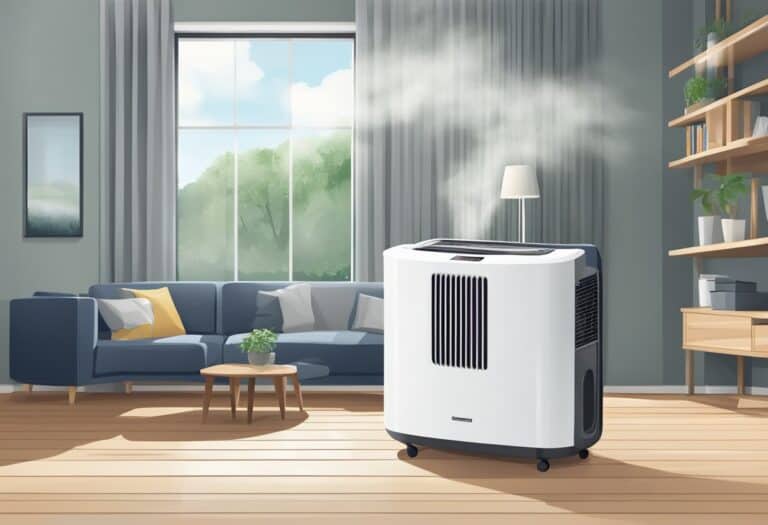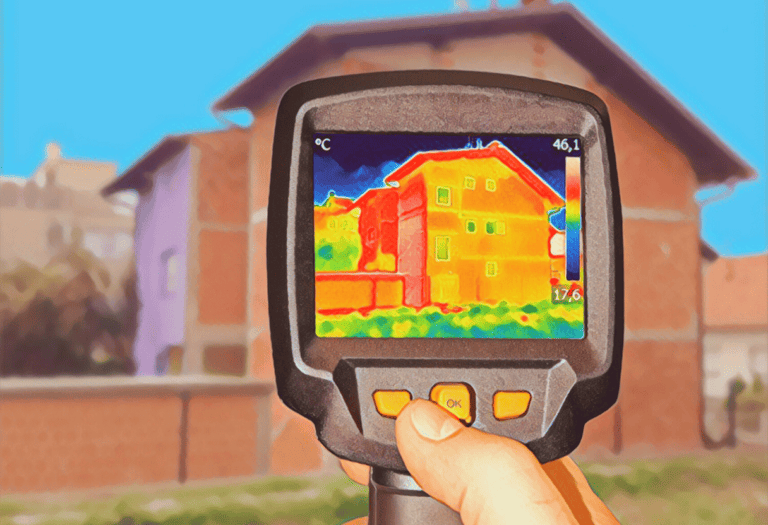During the scorching months of summer, heat waves pose a significant risk to health and well-being.
A heat wave, which can be defined as a prolonged period of excessively hot weather, has the potential to cause widespread heat-related illnesses. Protecting yourself and staying safe during these times requires an understanding of the risks and the implementation of effective strategies. To mitigate these risks, it’s important to recognize the signs of heat-related illnesses and to take proactive measures to remain cool and hydrated.
Being prepared for extreme heat events involves more than just knowing the forecast. It includes adjusting your daily routines to avoid the sun’s peak hours, wearing appropriate clothing, and maintaining a cool living environment. If you’re outdoors, seek shade and stay hydrated with water rather than beverages that can lead to dehydration. It’s also crucial to recognize that certain groups, such as the elderly, children, and those with chronic illnesses, are more vulnerable to the effects of a heat wave.
For these individuals, special precautions should be taken to ensure their safety and to prevent heat-related health issues.
To stay safe during a heat wave, stay hydrated, avoid peak sun hours, use air conditioning, and wear lightweight clothing. Special care should be taken for vulnerable groups like the elderly and children.
Understanding Heat Waves and Their Impact
Heat waves are prolonged periods of extreme heat that can have significant health impacts. It’s important to recognize the signs of heat-related illnesses, understand the influence of climate change on heat waves, and be aware of the statistics and trends surrounding these events.
Recognizing the Signs of Heat-Related Illnesses
Heat stroke and heat exhaustion are the most serious health problems caused by heat waves. You should be aware of symptoms such as high body temperature, headache, dizziness, muscle cramps, and fainting. The CDC advises seeking immediate medical attention if you or someone else shows signs of heat stroke, which is the more severe condition of the two.
The Role of Climate Change in Increasing Heat Wave Frequency
Scientists agree that climate change is leading to increased frequency and intensity of heat waves. Rising global temperatures mean that episodes of extreme heat are becoming more common, a trend repeatedly highlighted by the World Health Organization.
Heat Wave Statistics and Recent Trends
- In recent years, many regions around the world have reported record-breaking temperatures during heat waves.
- Analysis of historical weather patterns indicates an uptick in the frequency and duration of heat events over the last few decades.
Stay informed and prepared: heat waves are likely to continue being a critical public health concern in the years ahead.
Preparation Strategies for Extreme Heat Events
When temperatures soar, your safety hinges on proper preparation. Developing a comprehensive heat wave response plan, fortifying your living space against high temperatures, and staying connected with news outlets and local authorities can significantly reduce health risks.
Creating a Heat Wave Safety Plan
Firstly, establish a Heat Wave Safety Plan that outlines critical steps to take before and during a heat wave. Identify the most vulnerable members in your household, including the elderly, young children, and those with chronic ailments. Coordinate with your community or the Centers for Disease Control and Prevention to learn how to recognize and respond to heat-related illnesses. Plan for adequate hydration and establish a buddy system to check in with neighbors.
Adapting Homes and Buildings for High Temperatures
Next, adapt your home to withstand high temperatures. Install window coverings like reflective shades or blackout curtains to minimize heat entry. Use weather stripping and insulation to seal your home, keeping the cool air in and the heat out. Consider the installation of air conditioning units or evaporative coolers if possible. Visit local buildings or community centers that are air-conditioned during the hottest part of the day if your home does not stay cool.
Staying Informed Through News and Local Government Announcements
Staying informed can be lifesaving during extreme heat events. Monitor the National Weather Service for updates and heed heat advisories. Sign up for local alerts, and follow news outlets and local government announcements for updates on the heatwave. This information can include recommendations for public cooling centers, water distribution points, and safety tips specific to your area.
By implementing these strategies, you can safeguard your health and well-being during heatwaves. Remember, thorough preparation and staying informed are your best defenses against the dangers of extreme heat.
Practical Tips for Staying Cool and Hydrated

During heat waves, keeping your body at a safe temperature and maintaining adequate hydration are crucial. The following tips are tailored to help you mitigate the effects of extreme heat by focusing on hydration strategies, optimizing your environment, and making smart clothing and sunscreen choices.
Effective Hydration Techniques and Fluid Intake
Ensure that you drink plenty of water throughout the day, even if you’re not feeling thirsty. Aim for at least 8-10 glasses, but individual needs can vary, especially in extreme heat. Consuming electrolyte-rich sports drinks can be helpful to replenish salts lost through sweat, but be cautious of their sugar content.
- Do: Drink small amounts of fluids consistently throughout the day.
- Don’t: Wait until you’re thirsty to drink water, as this may be a sign you’re already dehydrated.
Utilizing Shade, Air Conditioning, and Fans
Stay indoors as much as possible, especially during the peak sun hours from 10 a.m. to 4 p.m. Use air conditioning to keep your indoor space cool. If A/C is not available, use fans to promote airflow and open windows to create cross-ventilation, considering the humidity levels. Additionally, seek out public spaces like libraries or cooling centers that offer refuge from the heat.
- Seek: Areas of shade or air-conditioned buildings to avoid prolonged sun exposure.
- Use: Fans to improve ventilation, especially when the air is not humid.
Choosing Appropriate Clothing and Sunscreen
Opt for loose, lightweight, and light-colored clothing that allows your skin to breathe and reflects sunlight. Wearing a wide-brimmed hat can also provide shade and lower your body’s temperature. Protect your skin with a broad-spectrum sunscreen with an SPF of 30 or higher, reapplying every two hours, or more often if swimming or sweating.
- Wear: Clothes that are appropriate for the weather, including a wide-brimmed hat and sunglasses.
- Apply: Sunscreen generously and regularly to all exposed skin to guard against harmful UV rays.
Special Considerations for Vulnerable Groups
During a heat wave, certain groups require additional precautions to stay safe. These groups include children, infants, older adults, pets, and individuals who work or engage in outdoor activities. It’s crucial to understand the specific needs and steps to protect each of these vulnerable populations.
Protecting Children, Infants, and Older Adults
Children and infants are less able to regulate their body temperature, making them more susceptible to heat-related illnesses. Ensure they stay hydrated by giving them plenty of water, and dress them in loose-fitting, lightweight clothing. Schedule outdoor play for cooler parts of the day and always supervise them in shaded areas.
For older adults, who are more prone to heat stress due to underlying health conditions, it’s important to stay indoors during the peak heat hours. If they do not have access to air conditioning, a cool bath or using wet towels on the skin can help reduce body temperature. Encourage frequent rest breaks and hydration if they need to be outdoors.
Caring for Pets During High Heat Conditions
Pets can suffer from overheating and dehydration just like humans. Always provide them with ample fresh water and avoid walking them on hot pavements which can burn their paws. It’s best to walk pets in the early morning or late evening. Never leave pets in a parked car, as temperatures can escalate quickly to dangerous levels.
Heat Safety for Outdoor Workers and Activities
Outdoor workers and those participating in outdoor activities are at significant risk during heat waves. Prioritize safety by wearing a wide-brimmed hat, using sunscreen, and taking regular breaks in shaded or cooled environments. Stay hydrated with water or sports drinks to replenish electrolytes, and be aware of the symptoms of heat exhaustion and heat stroke. If symptoms occur, immediately seek a cooler environment and medical assistance.
Remember to listen to your body and take immediate action if you are feeling unwell due to the heat.
Frequently Asked Questions
When confronted with a heat wave, your safety and health should be the foremost concern. It is important to understand the right measures and preparations to combat the intense heat effectively.
What measures can be adopted to stay safe in extremely hot weather?
To stay safe in extremely hot weather, stay hydrated by drinking plenty of water, avoid strenuous outdoor activities, and wear lightweight, light-colored, and loose-fitting clothing. Keeping cool with showers, baths, or wet towels can aid in maintaining a normal body temperature.
What preparations are essential for ensuring safety during a heat wave?
Before a heat wave hits, ensure your home is equipped with working air conditioning or fans. It is advisable to prepare an emergency kit that includes water bottles, a first-aid kit, and any necessary medications. Familiarize yourself with the location of cooling centers in your community.
How can you ensure your workplace is secure against heat-related hazards?
Ensure that your workplace has adequate ventilation and air conditioning. Management should implement regular breaks and provide a hydration station with water. It’s crucial for workplaces to have a heat stress management plan in place and to train staff on recognizing the signs of heat-related illness.
What strategies can individuals employ to prevent heat illness?
To prevent heat illness, take regular breaks in the shade or in air-conditioned environments, hydrate frequently with water or electrolyte-replacing beverages, and avoid caffeine and alcohol. Monitor yourself and others for signs of heat exhaustion or heat stroke, which require immediate action.
What actions should one take to survive extreme heat when outdoors?
When outdoors, seek shade, especially during midday hours when the sun is most intense. Wear a wide-brimmed hat and UV-protective sunglasses and apply a broad-spectrum sunscreen. If you’re exerting yourself, take more frequent breaks and hydrate continuously.
What are the key safety awareness tips to follow during periods of intense heat?
During periods of intense heat, keep informed about local weather forecasts, heed heat advisories, and reschedule outdoor activities to cooler parts of the day. It’s important to check on elderly, young, or sick individuals who may be more vulnerable. Recognize the warning signs of heat-related health issues, such as dizziness, nausea, and rapid heartbeat, and know how to respond properly when they occur.







